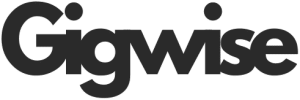Managing technology assets grows more challenging as organisations accumulate devices, software, and digital services. Many businesses still rely on outdated spreadsheets or paper records—approaches that guarantee information gaps, wasted money, security vulnerabilities, and compliance issues.
IT inventory management software transforms this landscape. Modern software for IT inventory delivers immediate visibility, automates tedious processes, and provides actionable insights about your technology investments. This guide examines practical approaches to selecting and implementing solutions that reduce costs, strengthen security, and ensure compliance without overwhelming your team or budget.
The Hidden Costs of Inadequate IT Inventory Management
Financial Drain
Organizations without proper tracking typically overspend 20-35% on technology. This waste comes from:
- Purchasing equipment that already exists somewhere in the organization
- Maintaining support contracts on decommissioned hardware
- Paying for unused software licenses while simultaneously being non-compliant in other areas
- Losing track of valuable assets that could be redeployed instead of buying new ones
A mid-sized company that implemented structured inventory tracking reported nearly £175,000 in recovered value during the first year—simply by finding and reallocating existing assets.
Operational Inefficiencies
Poor inventory practices create endless busywork with tech teams wasting hours searching for equipment and reconciling conflicting records. This diverts resources from strategic projects that could advance your business objectives.
Security Vulnerabilities
Untracked devices create perfect entry points for cyberattacks. The UK National Cyber Security Centre reports that organisations with incomplete IT inventories take 2.5 times longer to detect breaches, dramatically increasing both remediation costs and data loss.
Compliance Failures
Businesses face intricate compliance requirements from multiple directions:
- GDPR mandates knowing exactly where personal data resides
- Financial regulations require documented control of systems handling sensitive information
- Software licensing agreements demand accurate usage tracking
- Industry-specific frameworks impose additional asset management requirements
Penalties for non-compliance often start at tens of thousands of pounds and quickly escalate. Beyond financial penalties, the reputational damage can prove even more costly.

Essential Features of Effective IT Asset Management Solutions
When evaluating IT asset management solutions, prioritize these capabilities:
Automated Discovery and Tracking
Strong solutions automatically find networked assets and maintain real-time visibility without constant manual intervention. Bradford Council’s system, for example, automatically discovers and categorizes new devices within 4 hours of connection across 5,000+ endpoints.
Comprehensive License Management
Quality management tools centralize all licensing information, providing clear compliance visibility across various models—from perpetual licenses to complex subscriptions. Look for systems that alert you before compliance issues occur rather than after.
Complete Lifecycle Management
From procurement planning through decommissioning, your system should track each stage with appropriate workflows: purchasing, deployment, maintenance, performance monitoring, refresh planning, and secure retirement. This prevents assets from falling through administrative cracks.
Powerful Reporting and Analytics
Effective systems provide customizable dashboards that reveal usage patterns, identify optimization opportunities, and track departmental spending. A Manchester healthcare provider reduced quarterly technology spending by 22% after implementing analytics that revealed over-provisioning patterns.
Mobile Accessibility
Today’s distributed workforce needs mobile inventory tools. QR code and barcode scanning speeds physical audits while improving accuracy for field technicians working in varied locations.
Integration Capabilities
Connect your inventory system with service desk applications, procurement systems, financial software, and security tools to create a unified view rather than fragmented perspectives requiring manual reconciliation.
Implementing Technology Inventory Control
Even outstanding technology inventory control systems need thoughtful implementation:
Set Clear Objectives
Define specific goals before selecting technology. Establish measurable metrics like reducing new equipment purchases by 15%, cutting audit preparation time by 50%, or achieving 99% accuracy in physical inventory counts.
Plan Your Data Architecture
Define what information you’ll track for each asset type and establish consistent naming conventions. Getting these fundamentals right from the beginning prevents painful data cleanup later.
Address the Human Element
Develop comprehensive training and communication that includes clear messaging about benefits, role-specific guidance, departmental champions, and recognition for those who embrace new processes.
Consider a Phased Approach
Start with manageable segments like one asset category, then expand to additional hardware types, incorporate software licensing, integrate with service management, and finally implement advanced analytics.
Establish Ongoing Procedures
Create clear procedures for adding assets, tracking equipment moves, handling repairs, processing retirements, and conducting verification. Assign specific responsibilities to maintain data integrity.
IT Asset Optimization Strategies
Basic tracking delivers immediate benefits, but IT asset optimization offers deeper strategic value:
Predictive Maintenance
Historical data reveals patterns that help prevent failures. By tracking performance metrics and repair history, you can address potential issues during planned windows rather than emergency situations.
Hardware and Software Standardisation
Complete visibility highlights opportunities to simplify your technology landscape. One UK retail chain reduced desktop configurations from 12 models to 3, cutting support costs by 28% while improving user satisfaction.
Procurement Integration
When inventory connects with purchasing systems, organisations unlock automatic reordering of critical supplies, bundled purchasing for volume discounts, and data-backed vendor negotiations.
Enhanced Security Posture
Complete asset knowledge strengthens security by triggering alerts for unauthorized devices, prioritizing missing security patches, and identifying end-of-life systems before they become liabilities.
Future-Proofing for Emerging Technologies
Forward-looking inventory solutions accommodate IoT devices, specialized equipment, virtual/augmented reality hardware, and employee-owned devices in BYOD environments.

Choosing the Right Efficient IT Inventory Systems for Your Business
The market offers numerous options, from basic tracking tools to comprehensive enterprise platforms. Finding efficient IT inventory systems that match your requirements demands careful evaluation:
Assess Your Specific Requirements
Start with an honest assessment of your organization’s situation:
- How many locations need coverage?
- What’s your mix of fixed and mobile assets?
- Which compliance frameworks apply to your industry?
- What’s your staff’s technical proficiency?
- Which existing systems need integration?
These answers help narrow options to those genuinely suitable for your circumstances.
Deployment Model Considerations
Each hosting approach offers distinct advantages:
Cloud Solutions:
- Faster implementation
- Lower initial investment
- Automatic updates
- Accessibility from anywhere
- Minimal internal infrastructure required
On-Premises Options:
- Maximum control over data
- No internet dependency
- Customization flexibility
- One-time licensing options
- Integration with air-gapped networks
Hybrid Approaches:
- Core functionality in the cloud
- Sensitive data remains on-premises
- Scales based on changing needs
- Works during connectivity interruptions
Organizations often favor hybrid models that balance convenience with data sovereignty concerns.
Scalability Factors
Today’s small inventory can become tomorrow’s massive database. Evaluate how systems handle growth:
- Do performance or response times degrade as asset counts increase?
- Are licensing models punitive at scale?
- Can the system adapt to organizational changes?
- How does the platform handle multi-site deployments?
These questions help identify solutions that accommodate both current and future needs.
Total Cost Evaluation
Look beyond the initial price tag to understand your complete investment:
- Implementation services
- Data migration costs
- Training expenses
- Integration requirements
- Customization needs
- Support and maintenance fees
- Hardware requirements
- Internal staff time commitment
Request detailed breakdowns from vendors to avoid budget surprises.
Support and Implementation Services
Quality support dramatically influences success rates. Evaluate:
- UK-based support availability
- Implementation team experience
- Training options (online, onsite, role-specific)
- Documentation quality
- User community resources
- Customer references from similar organisations
The best technology fails without proper implementation and ongoing support.
The Business Case for IT Inventory Software
Implementing the right software for IT inventory delivers substantial returns across multiple dimensions:
- Financial benefits from reduced purchasing and optimized licensing
- Operational improvements through automation and simplified support
- Security enhancements via complete visibility and vulnerability management
- Compliance confidence with accurate, audit-ready records
- Strategic advantages through data-driven technology decisions
These benefits translate into 15-30% reductions in technology spending while simultaneously improving security posture and staff productivity.
The path toward IT asset optimization begins with assessing your current inventory processes. Whether replacing an outdated system or implementing formal inventory management for the first time, choose tools that match your specific requirements and organizational culture. With thoughtful implementation, even modest investments in technology inventory control typically deliver returns far exceeding initial expectations.











